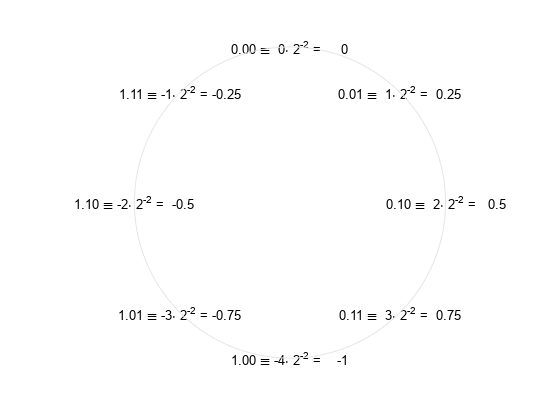数字表示
定点和浮点数表示
在数字硬件中,二进制数字以定点或浮点数据类型的形式来表示。了解不同数据类型是如何在硬件中定义和表示的,可以帮助您选择适合您应用程序的数据类型。
主题
通用
- Physical Quantities and Measurement Scales
Select measurement scales to represent physical quantities with fixed-point data types. - 定点硬件的好处
了解使用定点数据类型的硬件在内存、速度和成本方面的优势。 - 数字硬件中的数据类型和定标
概述数字硬件中的数据类型和定标。 - 支持的数据类型
仿真和代码生成支持的数据类型。
定点
- 定点数据类型
了解定点数如何以二进制字表示。 - Quantization
A weighted sum of bits represents the quantization of a real-world value. - Simulink 中的定点数
Simulink® 中使用的定点数据类型和定标表示法。 - numerictype of Fixed-Point Objects
Fields and settings for thenumerictypeobject. - 定点数据类型与内置整数类型
MATLAB® 中定点数据类型与内置整数数据类型的区别。 - 小数长度和定点数
负小数长度和小数长度大于字长的定义。
浮点
- Floating-Point Numbers
Representation and manipulation of floating-point numbers. - Scaled Doubles
Hybrids between floating-point and fixed-point numbers, which are stored by Fixed-Point Designer™ as doubles.
